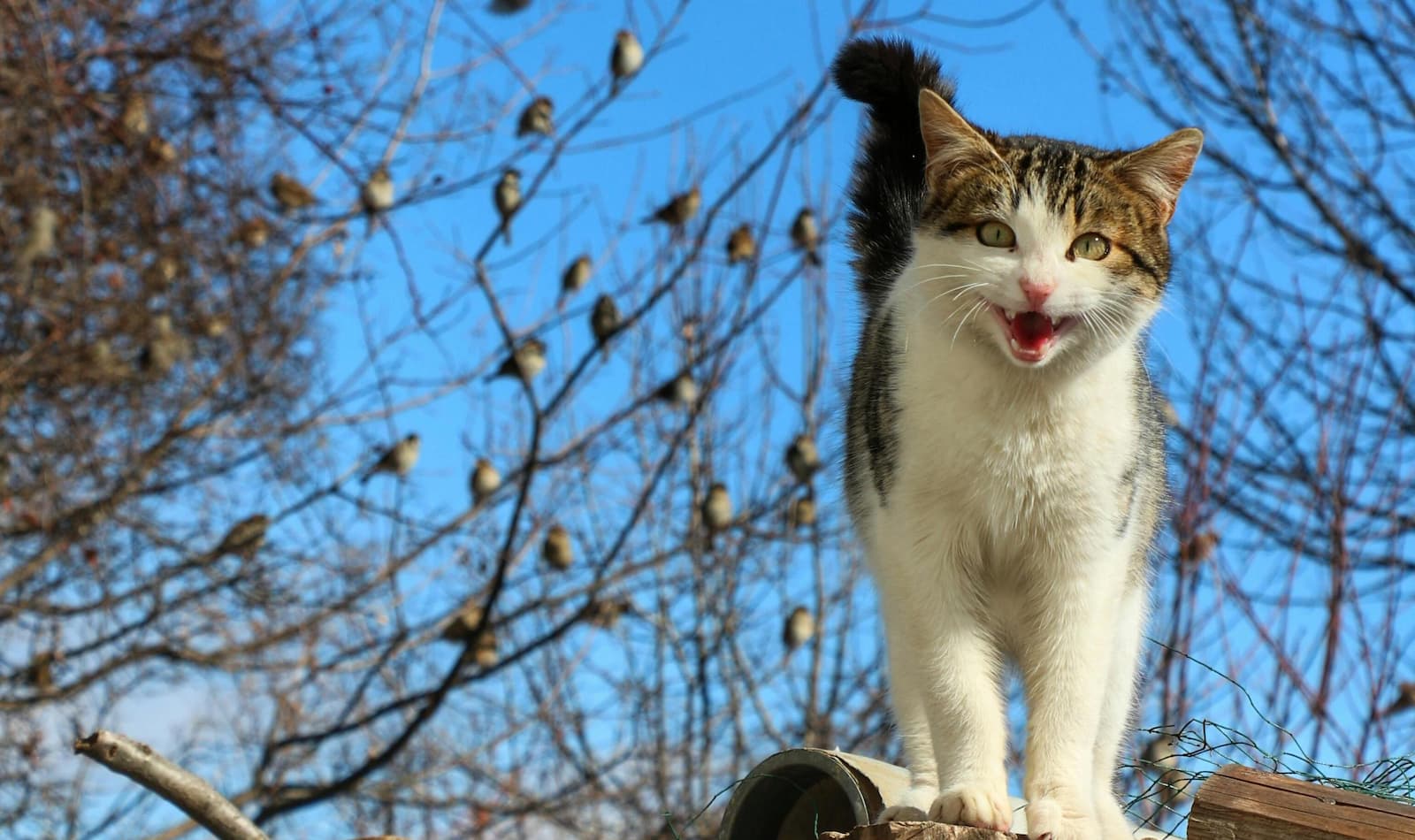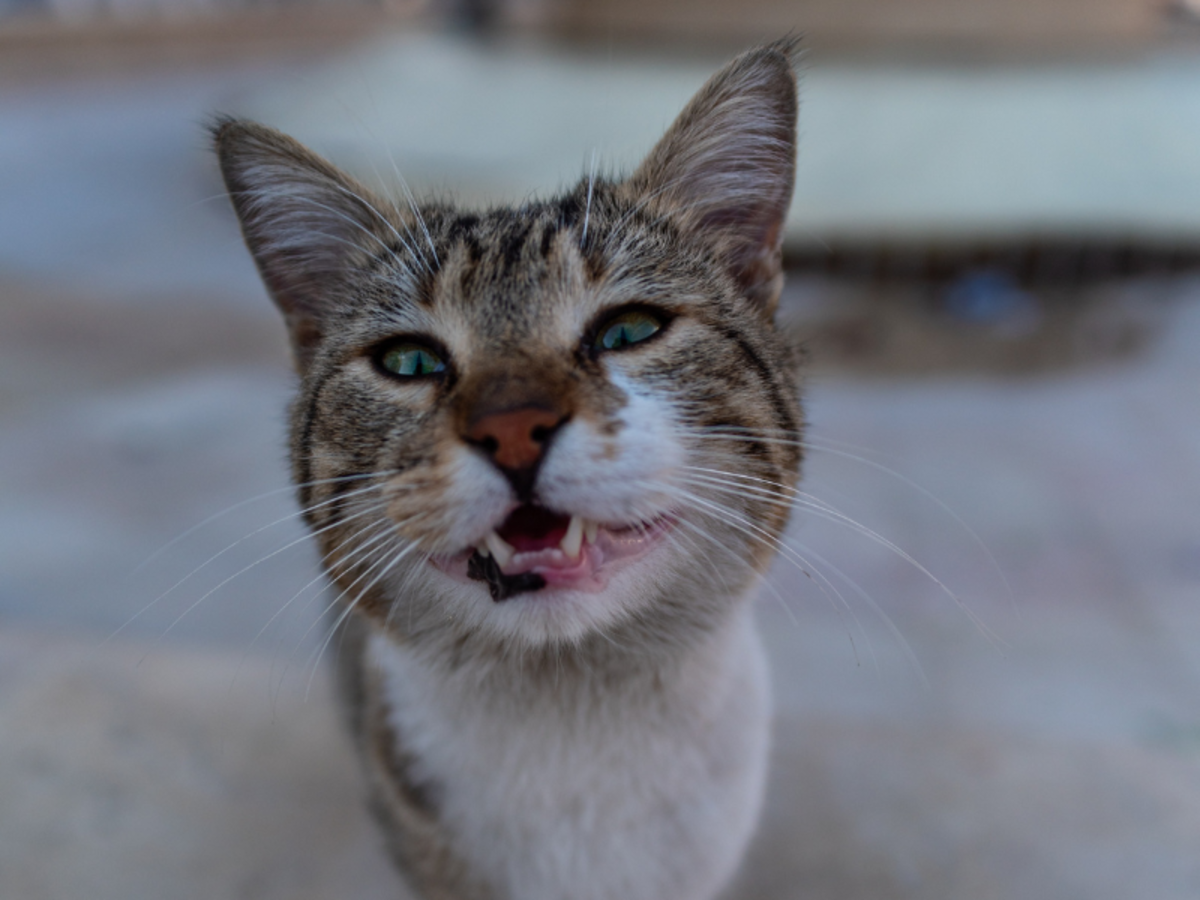Some warning signs typically arise when introducing cats to one another. As independent creatures, cats avoid sharing their territory with others unless we show them how to play nicely. When meeting a new feline competitor, they sometimes feel threatened, worried, or angry. So, putting two unfamiliar kitties together can be tricky and challenging.
However, with patience, preparation, and understanding, multiple cats can bond and coexist peacefully. Let’s look at those warning signs so you’ll know how to recognize any potential conflict. I’ll also share some valuable tips for successfully starting a happy friendship.
How to Recognize the Warning Signs When Introducing Cats
When first introducing cats that haven’t met each other before, the first step is to look at their body language and how they act closely. You can tell a lot from their posture, facial expressions, and sounds because that’s how felines communicate. Notably, the most significant warning signs when introducing cats include:
1. Dilated Pupils
It might be tricky to get close enough to see, but when the center of the eyes gets larger (dilates), it suggests the cat feels scared, nervous, or angry. Dilated pupils are one of the first responses to a perceived threat, indicating they are getting ready to attack or defend themselves.
Staring at one another is a surefire way of saying, “I’m on high alert, and I’m feeling tense.” This clue should tell you that your cat isn’t uncomfortable with the other one being so close and that it is poised to lash out at any moment.
Cats can have dilated pupils in other circumstances, too.
It doesn’t always necessarily mean they are afraid or stressed out. Generally speaking, it’s a sign of positive or negative arousal. Cats’ pupils can also dilate when feeling excited, curious, playful, or while hunting prey.
For example, when I introduced a cat to my neighbor’s kitten, her eyes were wide and bright, but she stared at the kitty with a hostile look. Understandably, she was unhappy and confused by having the little one in her home.
By separating them and giving them time to adjust, their second meeting was less daunting, as reflected in their having more relaxed eyes.
The key takeaway when it comes to dilated pupils is to consider the context of the situation and look for other clues and behaviors to reinforce your opinion. It helps to look at the whole picture and the cat’s personality to determine their current mood.

2. Flattened Ears
Felines sometimes tilt their ears sideways or backward if they feel aggressive or sense a threat. Also known as airplane ears, this visual cue is more straightforward to spot than dilated eyes, making it a more apparent warning sign when introducing cats.
When cats flatten their ears this way, they are putting their defenses up, trying to protect themselves from the potential threat of the other cat.
One way to verify this body language as a sign of possible hostility is to pay attention to what else they do with their body. Does the cat also lower its head and crouch down? If yes, it’s probably ready to strike or flee. If the snarling and spitting start, you’re too late. That’s why approaching a cat with flat ears is never a good idea.
As veterinarian Dr. Joshua Montgomery points out, you can tell a lot by positioning your cat’s ears:
- If perked up and facing forward, the cat is probably curious and alert
- Flattened ears against the head mean defensiveness, which suggests fear or signs of aggression
- Relaxed, slightly tilted backward ears indicate a calmer state of contentment

3. Swatting or Biting
Using paws to swat or teeth to bite is a quick way to lash out in either a defensive or offensive manner. When a cat gets into fight or flight mode (from sensing an unwanted threat), they may easily harm other animals or people around them. They might also scratch, kick, or claw their way out of the situation they face.
Most pet owners can relate to avoiding scratches when bathing their cats. It’s the same concept. They use their claws because their stress levels are high, and they’re annoyed at you for putting them in an uncomfortable situation.
The simple way to give a cat a bath without getting scratched is to end bath time if the cat becomes agitated and scratches. The same approach is valid when cats meet one another for the first time: if you sense physical hostility, end the meeting. That way, you can stop any fights before they start.
4. Getting Vocal
When cats start hissing or growling, it’s hard to miss. Spitting, snarling, yowling—these noises all mean that the intruder needs to back off quickly. Unlike a purr or a sweet meow, a cat’s hiss may speak words of hostility, fear, or annoyance.
Essentially, they are unhappy with the situation and might start showing aggressive behavior.
Together with the red flag of unfavorable vocals, either animal could start showing their teeth and claws—not a pretty sign because that suggests they are getting ready to bite or scratch.
When the vocalizations start, distractions are the best way to defuse the situation. Having a few cat treats in your pocket is an excellent way to quickly shift the focus to something other than the other animal and make them relax. Rather than forcing the situation, it helps to respect the cat’s feelings and give them some space to calm down.

5. Puffed-up Fur
Arching the back, raising the tail, and puffing up the fur are highly recognizable signs of intimidation or anger in cats. They try to make themselves look bigger to scare the other cats away. Accompanying hissing or growling suggests they intend to maintain their territory and assert their authority.
This cat behavior is similar to a human confronting a black bear: by standing tall and making noise, we tell the bear that we are a formidable presence. We might feel scared and have goosebumps, but our actions warn the bear that we are ready to defend ourselves.
Cats with raised hackles (called piloerection in the veterinary world) are unpredictable and volatile. Therefore, approaching or touching an animal in this state is not a good idea.
Instead, try to make the cat feel more relaxed and safe by reassuring them that all is well. Two effective ways to do this are by giving them space and speaking in a calm, soothing tone.

The above warning signs are typical and expected when introducing cats. However, if such behavior continues or escalates, then it can lead to injuries, infections, or chronic stress. Let’s explore how to intervene and help our kitties overcome their issues.
4 Steps to Introduce Your Cats Safely
What is the key to a successful introduction? Do it gradually and carefully. You don’t want to rush or force your pets to interact unless they’re ready. Here are a few things you can do to prepare:
- Get a separate room ready for the new cat. Set up a particular area with their own toys, litter boxes, food bowls, and water. Doing this will help the new kitty adjust to their environment before meeting the already-resident cat.
- Let the cats smell each other’s belongings first. This step is essential for a successful first meeting because cats use smell to identify and communicate. Swapping bedding, toys, or grooming tools is a clever way to get each cat used to the other’s scent positively.
- The introduction process: Now, you can let your cats see each other. Start slowly by slightly opening the door between them or using a baby gate or a screen. Keep a safe distance and supervise them closely with rewarding treats on standby.
- Allow the cats to interact: when you are confident that no warning signs pop up when introducing your cats, you can remove the barrier and let them explore the house together. Monitor them for a while, and don’t hesitate to give them their own space back if they seem uncomfortable together. You can always try again tomorrow.

Top Tip!
Letting cats see each other first is an important step for a gradual introduction. Using a visual barrier like a door, a gate, or a screen helps to prevent any unwanted physical contact or fights from breaking out. We can use treats to positively reinforce our cats to be calm and curious instead of afraid or aggressive.
Final Thoughts
In my experience, the best way to avoid a conflict is to look out for the warning signs when introducing two or more cats and expose them gradually. When pupils are relaxed, ears are upright and forward, and fur lies smooth, you know letting them meet and form a bond is safe.
The introduction process can take a few days to a few months, depending on both cats’ personalities and initial reactions. It helps to be patient and flexible, always following your cat’s non-verbal and verbal cues.
Sources and Further Reading
- How To Introduce Cats the Right Way | PetMD
Introducing cats takes time, patience, and the right supplies. Learn how to introduce each other here and establish a positive relationship. - Aggression in Cats | ASPCA
If your cat seems overly aggressive, there could be several reasons for his or her behavior. Learn more about the causes and types of feline aggression, and how you should respond.




